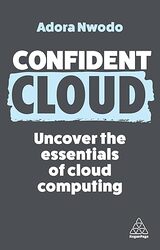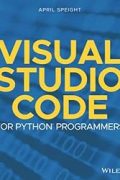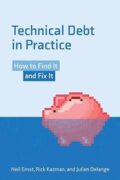
Rating: 7.1/10.
Book about cloud computing and provides a high-level overview of some concepts and technologies at a beginner level. Overall I was disappointed with the depth of the content, it contained mostly high-level information about a lot of topics but very little specifics – seems that the author worked with these technologies at a surface level and has some understanding of these technologies and best practices in an ideal sense, but there is no indication of actual experience with most of them.
Chapter 1. Cloud computing has the advantage of renting resources when needed, which enables flexibility and offloads hardware security concerns onto somebody else’s infrastructure. Infrastructure as a Service (IaaS) gives you a virtual computer on the cloud platform, while Platform as a Service (PaaS) is like Netlify or Heroku, which provides automated deployments and easy integrations with services like databases. Cloud services also include functions, databases, or machine learning as a service. Public cloud has shared resources with multi-tenancy, whereas private cloud gives you dedicated infrastructure for greater control and privacy, or you may use a hybrid of the two models. Multi-cloud refers to using multiple cloud providers simultaneously.
Chapter 2. Different components of a cloud provider include the frontend, which provides a user-friendly interface for application developers, while the backend provides a solid foundation including resource allocation, data storage, and scalability. The network component enables data transfer security between servers and ensures data is routed efficiently, and virtualization technology allows multiple tenants to run on the same physical infrastructure.
Chapter 3: Major cloud providers include AWS, GCP, Azure, and all of them provide global and scalable infrastructure. You pay for what you use either through a pay-as-you-go model or by reserving capacity in advance. There are also several niche cloud providers such as Tencent, IBM, Oracle, etc. The choice of cloud provider depends on a mixture of service offerings, reliability, price, compliance, and interoperability with existing systems, among many other factors.
Chapter 4. Cloud storage can be implemented in the public cloud or private cloud (for has added security). There are three types of cloud storage: block storage involves mounting a volume like an EBS and is used for databases; file storage has a hierarchical file system; and object storage, which is like S3 that has a flat set of objects.
Chapter 5. Big data processing analytics naturally work in the cloud because both data storage and compute can scale flexibly. The core technologies include Hadoop, which provides a distributed file system and MapReduce to process data in parallel; Spark, which is a flexible tool to process big data in memory; and Kafka, which offers real-time streaming.
Chapter 6: Virtualization uses virtual machines that emulate the operating system, while containerization is more lightweight and shares a host OS. Containers are often used to run multiple microservices simultaneously. Kubernetes is used for container orchestration, and the control plane manages communication between the clusters and assigns pods (groups of containers) to nodes.
Chapter 7: Aspects of cloud engineering include CI/CD and DevOps to share responsibility of the deployment process, continuously integrate new changes into the code, and deploy them in stages with testing and automated rollback if failures occur. Infrastructure as Code (IAC) specifies cloud configuration, usually declaratively, using tools like Terraform or CloudFormation. Monitoring is important to detect problems before customers complain and logs help with investigation after incidents.
Chapter 8: Platform Engineering involves building internal tooling to make developers more efficient and simplify processes like deployment. A related concept is no-code tools, which run on the cloud and enable non-developers to be productive.
Chapter 9: Cloud security can be compromised by many factors, including misconfigurations, weak access controls, and employees committing API keys. Best practices include the principle of least privilege, expiration of secrets, gatekeeper service that forwards verified requests, and federated identity providers like Single Sign-On. Best to have procedures to model assets and threats, integrate security steps like vulnerability checking into deployment pipelines, and procedures to follow in the event of security incidents.
Chapter 10. Steps to move an application and migrate applications from one cloud provider to another.
Chapter 11: Cost management using tools to monitor spending, selecting appropriate instance types such as pay-as-you-go, reserved instances, and spot instances that may be terminated on short notice. Monitoring underutilized instances and determining if they can be stopped or scaled down.
Chapter 12: Cloud computing roles – overview of various job titles and responsibilities involved with cloud computing.



